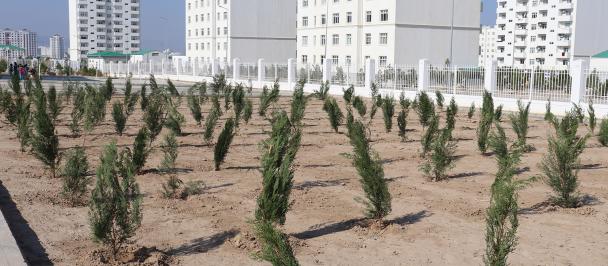Supporting climate resilient livelihoods in agricultural communities in drought-prone areas of Turkmenistan
What is the project about
Turkmenistan is a water stressed country and has one of the harshest climates in the Central Asian region. Climate change modeling indicates significant increases in temperature and reduction in rainfall. Temperatures are expected to increase by 20C by 2040, with precipitation declining across all agro-ecological zones by 8-17 percent between 2040 and 2100, which coupled with increase in temperature, will lead to a decrease in total volume of water availability that is likely to have a profound impact on agricultural production systems and local farmers. The long-term solution envisaged by the Government of Turkmenistan is to mainstream climate change adaptation at the community, district, provincial and national levels in order to secure climate resilient livelihoods in agricultural communities. To help the Government meet these outcomes, the project will support three inter-related components, namely (i) improving climate related socio-economic outcomes in targeted agricultural communities in Lebap and Dashoguz velayats through the implementation of community-based adaptation solutions; (ii) Mainstreaming climate adaptation measures in agricultural and water sector development strategy and policy; and (iii) Strengthening national capacity for iterative climate change adaptation planning, implementation and monitoring in the country.
The project will directly strengthen the adaptive capacity and reduce the vulnerability of around 40,000 to 50,000 persons (of which around 51.2% would be women) in the Lebap and Dashoguz velayets by helping them improve the productivity of farm operations, be better prepared for increasing water scarcity and by introducing alternative income sources. Improved water efficiency and crop production systems will bring approximately 20,000 ha of agricultural and 500,000 ha of pastoral lands under climate resilient technologies resulting in a real net household income increase of at least 15% for participating households (including at least 20% of women-headed households). The replication potential of successful efficient water management and climate resilient practices and of new climate-friendly sectoral planning, legislative and capacity development measures would indirectly benefit around 500,000 people in Turkmenistan, of which around 50% would be women).
What we aim to accomplish
The objective of the proposed project is to support climate resilient livelihoods in agricultural communities in the Lebap and Dashoguz velayats in Turkmenistan. The project’s incremental value lies in enabling farmers in one of the driest regions of the country to overcome the critical barriers described above that prevent them from reducing the vulnerability to climate change induced water stress and other environmental hazards in the agricultural sector. It will develop and demonstrate a matrix of climate adaptation solutions for further replication outside of the two velayats. The experience will be shared and replicated beyond project boundaries through a serious of lesson sharing events. The project will attempt to achieve this objective through the design of the following three inter-related outcomes and their respective outputs and activities:
· Outcome 1: Improved climate related socio-economic outcomes in the targeted agricultural communities in Lebap and Dashoguz velayats through the implementation of community-based adaptation solutions;
· Outcome 2: Mainstreamed climate adaptation measures in agricultural and water sector development strategy and policy; and
· Outcome 3: Strengthened national capacity for iterative climate change adaptation planning, implementation and monitoring

 Locations
Locations



